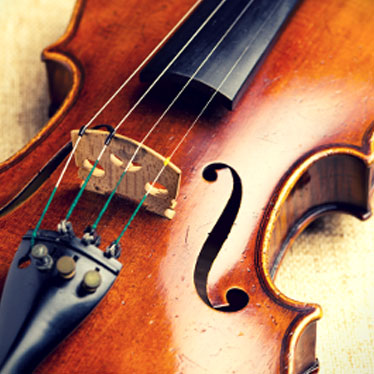Will A Better Violin Make My Child's Playing Sound Better?

Every parent has been there. With a brave, almost sincere, smile pasted on your face, you try to keep from cringing as barely recognizable strains of “Twinkle, Twinkle, Little Star” are patiently produced by your budding virtuoso.
Well, it’s not that bad, of course. But, after a few months of practice, many parents find themselves asking if a better quality violin could possibly make their child’s playing sound better. Does craftsmanship actually have that much impact on the sounds produced by your developing musician?
Actually, yes it does. Although there are a few changes that you can make to improve the sound of an inexpensive beginner instrument, such as changing to a high quality string set or buying a better bow, a quality crafted violin sounds different (and more pleasing) because it is different.
Craftsmanship is Key
With a stringed instrument like the violin, the materials used and the techniques involved during the construction process make significant influences on the sounds produced. Understanding how violins are crafted and appraised can help you realize why a better quality instrument can help your child’s playing sound better.
Typically, the violins crafted by a single luthier can be very pricey. The hours it takes to create a single instrument vary according to the artisan, but the price you pay for a hand-made instrument is well worth it if you are an experienced violinist. The responsiveness, resonant qualities, and sound projection are genuinely superior due to the materials and craftsmanship involved, and if properly cared for, a well-crafted violin will last for many score years.
At the other end of the spectrum, beginner model instruments are generally manufactured and shipped ready-made. These instruments usually feature lower quality tonewoods, and their price (usually less than $150) reflects that fact. It is very difficult for beginner students to coax pleasing sounds out of one of these types of violins, which often leads to discouragement and frustration.
However, in recent years, quality manufactured violins for beginner and intermediate level violinists have emerged into the marketplace. These instruments are crafted from superior quality woods in a controlled environment (which helps prevent warping from expansion and contraction) with a true attention to detail. After the violin has been created, it is then sent to a qualified luthier shop or dealer who performs the final fitting out process. This combination of innovation and tradition produces an excellent quality violin for students. And, the affordable price (around $500 for a complete outfit, which includes the case, bow and rosin) makes it an incredible value for most parents.
Solutions and Options
If you’ve already purchased the violin for your child, you may not want to immediately purchase another. In that case, you can take the instrument to your local dealer or specialty luthier shop and ask for their assessment of the instrument. Perhaps a simple repair, such as soundpost re-positioning or seam regluing can make your child’s violin sound better. Other damage can also affect sound quality, look for:
- Cracks or seam separations—these cause screechy sounds and other unpleasant tones, plus, if left untreated can completely ruin the instrument
- Slipped pegs and other tuning problems—perhaps the pegs need replacement
- Dirt, grime and rosin build-up—make sure that you child is wiping down the strings and body of the violin after each practice or playing session
If these fixes don’t produce much help, you can try upgrading the strings on the violin or purchase a better quality bow. Both of those items influence the sound quality of the violin.
When all else fails, you can also take your child to a few dealer shops and have him or her try out some other violins. If you’ve tried improving the violin that your child has without any marked result, but hear a tremendous difference with another instrument, you may want to consider a new purchase.
Quality outfits offer years of playing pleasure, and the benefits your child will gain from the playability and encouragement that a quality violin can foster is well worth the affordable investment. Before you know it, you’ll be wearing that smile proudly as you see the learning progress and delightful sounds a quality violin can produce.


